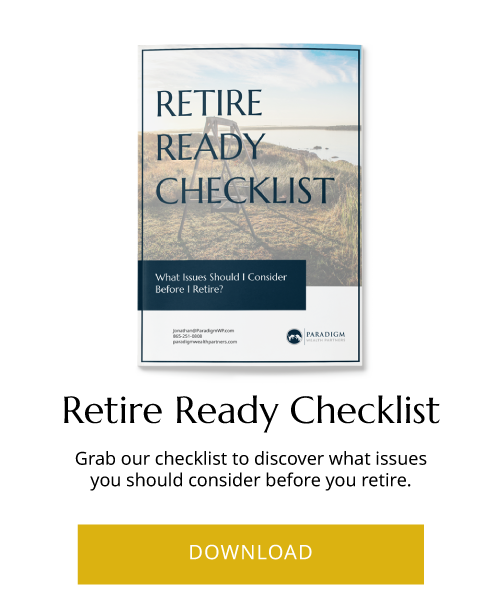Seven Ways to Create Opportunity During Tough Economic Times
Much of the economic (and general) news is currently dire. Unemployment is skyrocketing, consumer spending is plummeting, and the stock market is unpredictable. However, opportunity often comes out of grim circumstances. The current situation is no different if you take a few proactive measures.
For those of you who are considering creating an estate plan, now is a great time to do it. For those of you who already have an estate plan, now is a good time to revisit it. The current market conditions create the perfect opportunity to utilize strategic tax planning strategies. These could greatly benefit your family in the future.
Thanks to the ability to waive RMDs (Required Minimum Distributions) for 2020 under the CARES Act, those who are at RMD age can convert to a Roth account without being required to take their 2020 RMD.
Roth Conversion
A Roth conversion is a smart long-term strategy; but employing the strategy during a market correction amps up the impact. When you do the conversion during a drop in the market, the income tax cost is reduced because of the downturn. When the rebound comes (and we believe it will) the appreciation can be distributed income tax-free.
Converting to a Roth will accelerate your income tax rate to reflect the time of conversion. You pay tax on the account’s value now; but you will be doing so at reduced values from the market decline.
Once the conversion is done, the whole account (including any post-conversion appreciation in assets) can be taken as a tax-free distribution at withdrawal. There are rules on the timing of obtaining future earnings and appreciation as tax-free income. It is best to get guidance from your CERTIFIED FINANCIAL PLANNER™ to understand how this impacts your situation.
For those who make yearly monetary gifts to family members, consider having them create a Roth IRA. Those under the age of 50 can contribute up to $6,000 and those over 50 can contribute another $1,000 (providing he or she has earned income). These monetary gifts, used to fund the Roth, can provide real timing benefits in the current market conditions.
Notes: Traditional IRA account owners have considerations to make before performing a Roth IRA conversion. These primarily include income tax consequences on the converted amount in the year of conversion, withdrawal limitations from a Roth IRA, and income limitations for future contributions to a Roth IRA. In addition, if you are required to take a required minimum distribution (RMD) in the year you convert, you must do so before converting to a Roth IRA.
A Roth IRA offers tax deferral on any earnings in the account. Qualified withdrawals of earnings from the account are tax-free. Withdrawals of earnings prior to age 59 ½ or prior to the account being opened for 5 years, whichever is later, may result in a 10% IRS penalty tax. Limitations and restrictions may apply.
529 Plans
Similarly, in-plan appreciation can be withdrawn and spent income-tax-free for qualifying education expenses. The asset allocation of the account should be in accordance with the time horizon for future withdrawals. If the money will be spent relatively soon, planning should consider how much risk you can take in the market and if your horizon is long enough to take advantage of the eventual comeback.
Prior to investing in a 529 Plan investors should consider whether the investor’s or designated beneficiary’s home state offers any state tax or other state benefits such as financial aid, scholarship funds, and protection from creditors that are only available for investments in such state’s qualified tuition program. Withdrawals used for qualified expenses are federally tax free. Tax treatment at the state level may vary.
Stock Options
The income tax implications of cashing out stock options are based on the underlying value at the time you exercise. If market values have dropped steeply, the tax cost to exercise drops along with it.
Stock options can be non-qualified stock options or incentive stock options. The tax treatment of the net results can vary. If you have options whose values have dropped steeply, ask your CERTIFIED FINANCIAL PLANNER™ if now is a good time to exercise.
Transfer Tax Planning
If the resident in the White House should shift next year, there would likely be changes to the tax reforms of 2017. Remember, they increased the limits of gift and estate tax exclusions (which is $11,580,000 in 2020). Either way, the tax laws will expire after 2025. There will likely be a party handover sometime in the future.
A sharp increase in tax rates is possible after the 2026 election. Now is the time to take advantage of exclusions and strategies that can transfer assets to family members in a tax-advantaged way.
The reduced asset values seen recently can create ideal opportunities to execute strategies for moving future appreciation out of your estate in a tax-advantaged basis. Here are some ways you can do so:
SLAT Planning
For couples who will be subject to federal/state estate taxes upon death, a SLAT (Spousal Lifetime Access Trust) may be worth considering. It could allow assets to be removed from your taxable estate while giving your spouse flexibility to access them should they be needed.
A SLAT is an irrevocable trust that includes your spouse as a permissible (usually primary) beneficiary. This means gifted assets can be accessed by your spouse while they are living.
While your spouse may benefit during his or her life, the full value of the trust is excluded from both of your estates for estate tax advantages.
In a battered market, this technique is even more beneficial. If a SLAT is funded at current values and the market recovers, the appreciation of the post-SLAT funding is barred from your estates. You can do so at the current reduced values for gift and estate tax purposes.
GRAT Planning
A GRAT (Grantor Retained Annuity Trust) is a split-interest trust where the grantor (the person who established the trust) retains the right to a yearly annuity payment for a term of years. This period is typically two to ten years.
At the end of the term, assets left in the trust are payable or held further in the trust for additional beneficiaries. For gift-tax purposes, the valuation of the retained interest and the value of the gift to remaining beneficiaries is determined when the trust is initially funded. If the value of the retained interest is roughly equal to the value of the assets used to fund the GRAT, the gift to the remaining beneficiaries is around zero. The valuations are determined using discount rates prescribed monthly by the IRS, referred to as the Applicable Federal Rate (AFR).
The current climate can be an ideal GRAT opportunity. If the market appreciates significantly from its current values, the GRAT offers the ability for appreciation to go to your beneficiaries free of gift taxes.
If the assets in the GRAT appreciate at higher rates than the AFR during your interest term, the GRAT will have tax benefits. All appreciation in excess of the AFR will go to your remaining beneficiaries free of gift taxes. With AFR rates at near historic lows (1.2% for April 2020) there are even more opportunities.
CLT Planning
A CLT (Charitable Lead Trust) is similar to a GRAT. Rather than the creator retaining annuity interest, the initial term interest is payable to charities chosen by the creator.
As with a GRAT, if the assets held inside the CLT appreciate at higher rates than the AFR, payable funds to the remaining beneficiaries will be transferred free of gift and estate taxes.
Now Is the Time
Everyone is aware of the dangers of this pandemic. It has affected the market, the economy, personal lives, our communities, and our families. We are unnerved by not knowing what the future holds. There are things we can control to provide some comfort. If you have been putting off financial matters (particularly estate planning), now is the time.
Information in this material is for general information only and not intended as investment, tax or legal advice. Please consult the appropriate professionals for specific information regarding your individual situation prior to making any financial decision. No strategy assures success or protects against loss. Investing involves risk including loss of principal.



